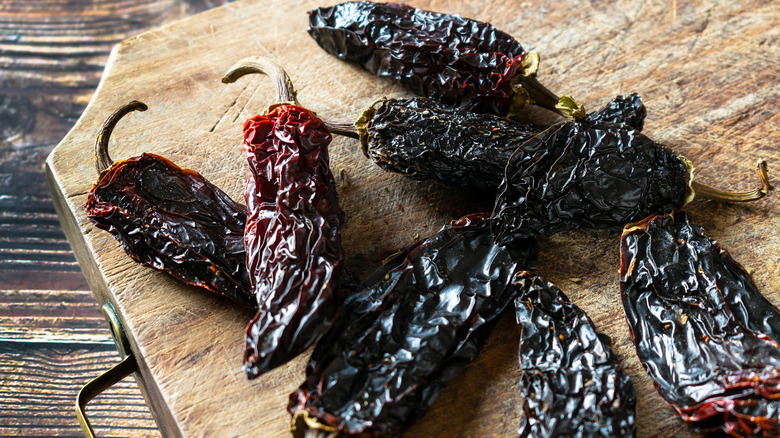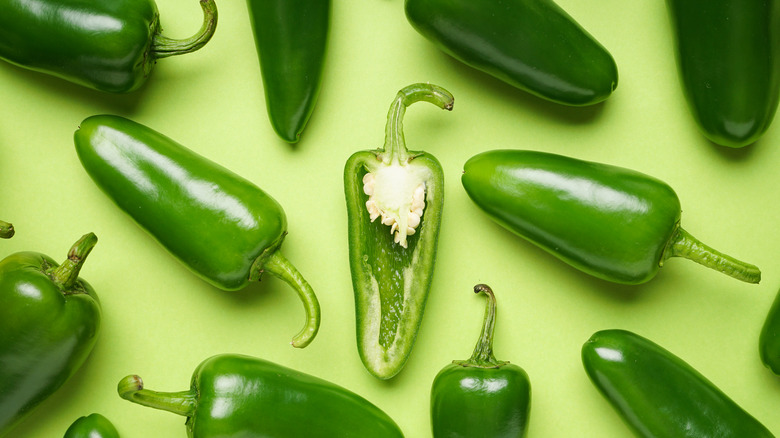Why You Need To Remove The Seeds Of Dried Chile Peppers
Dried chile peppers are a great way to add some heat and flavor to a dish and can be used to enhance stews, soups, chilis, tomato sauces, and salsas. There are a number of different varieties of dried chiles, but some of the most common ones include ancho, guajillo, mulato, and chipotle peppers (per Delighted Cooking).
Mexican cuisine in particular often prominently features dried chile peppers, represented in staples like mole, a traditional sauce of hot chiles, chocolate, spices, and more (via the Washington Post). Ancho and mulato, along with pasilla peppers, are even referred to as the "Holy Trinity" of Mexican dried chiles, according to Diversivore.
Dried chile peppers are a versatile ingredient that can also be used to spice up marinades or rehydrate and stuff with your choice of meat, cheese, or veggies, chile relleno-style. Whatever route you decide to go with dried chiles in your cooking, just make sure to remove the seeds.
Go seedless and keep things smooth
While some dried chile peppers bring the heat, it's a common misconception that peppers derive their spice from the seeds. That potent burn originates from capsaicin, the chemical found in peppers that's responsible for your sweating and pain when eating spicy foods, according to Chili Pepper Madness.
The capsaicin is actually concentrated in a part of the pepper plant called the pith, a whitish membrane that can be extracted for those opting to reduce the heat factor. Seeds not only aren't the source of a dried chile pepper's fire, but they also have a bitter taste to them that people might find off-putting or that could negatively affect certain recipes (via Serious Eats). So spice heads take note: You don't need to retain the seeds to ignite the tongue torch.
Another reason you may want to consider going seedless with dried chile peppers before incorporating them into your cooking is texture, specifically in regards to sauces, since seeds can escape processing and throw off the balance of a smooth and creamy texture. You can either remove the seeds before cooking or strain them afterward. For the former approach, follow Mashed's simple trick that makes seeding chile peppers a snap and saves you time and hassle.

